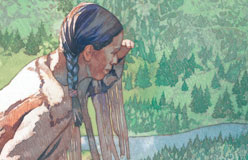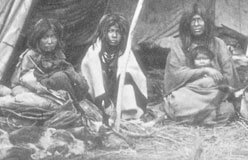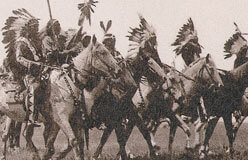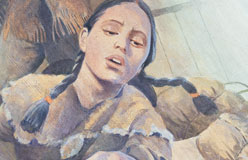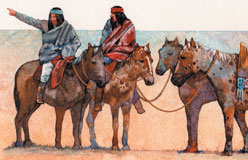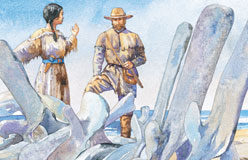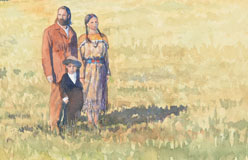When Sacagawea was born, George Washington was president, and the country consisted of 13 states huddled along the Atlantic Coast. But all that would be changing very quickly.
Thomas Jefferson, who became president in 1801, envisioned a nation that stretched from the Atlantic to the Pacific. To the Native Americans who had lived on this land for thousands of years, he gave little thought. But the European nations that had claimed various parts of the West worried him. He was especially concerned that France had recently acquired from Spain a huge parcel of land called Louisiana. The important port of New Orleans was at the southern tip of this land, so Jefferson sent a representative to France to try to get the French leader, Napoléon, to sell New Orleans to the United States. Jefferson got way more than he bargained for.
